Bringing Houseplants Back Indoors
We’re bringing houseplants back indoors! Our beloved tropical plants have enjoyed a summer of sunshine and fresh air on the patio, balcony or porch. With night temperatures now dropping toward single digits, though, it’s time for them to come back inside for the colder seasons. Here are the steps we’re taking to get our plants prepared to rejoin the indoor environment.
Step One: Inspect for damage, disease, and insects and remove any unhealthy or unsightly parts
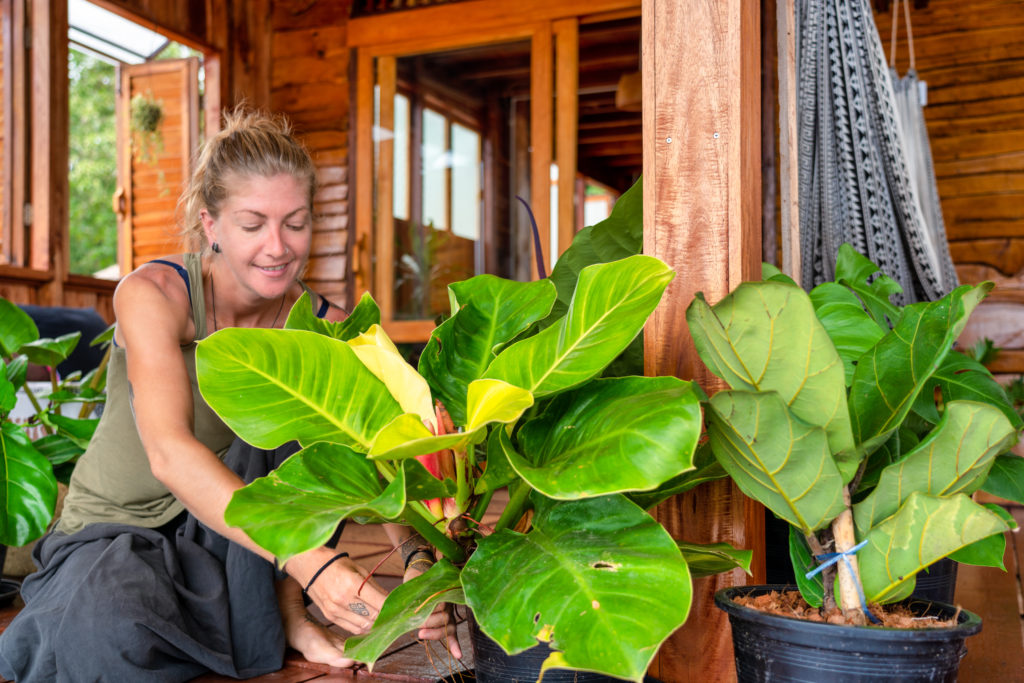
Give plants a thorough visual inspection, looking closely at leaves. Check in curled or folded areas, and pay close attention to the undersides of the leaves for pests, webbing, eggs, or other signs of insects. Use sharp, clean trimmers to snip away any leaves (or parts of leaves) that are dead or damaged. This is the perfect opportunity to give your plants a makeover!
Step Two: Wash plants and apply an insecticidal soap to avoid bringing pests indoors
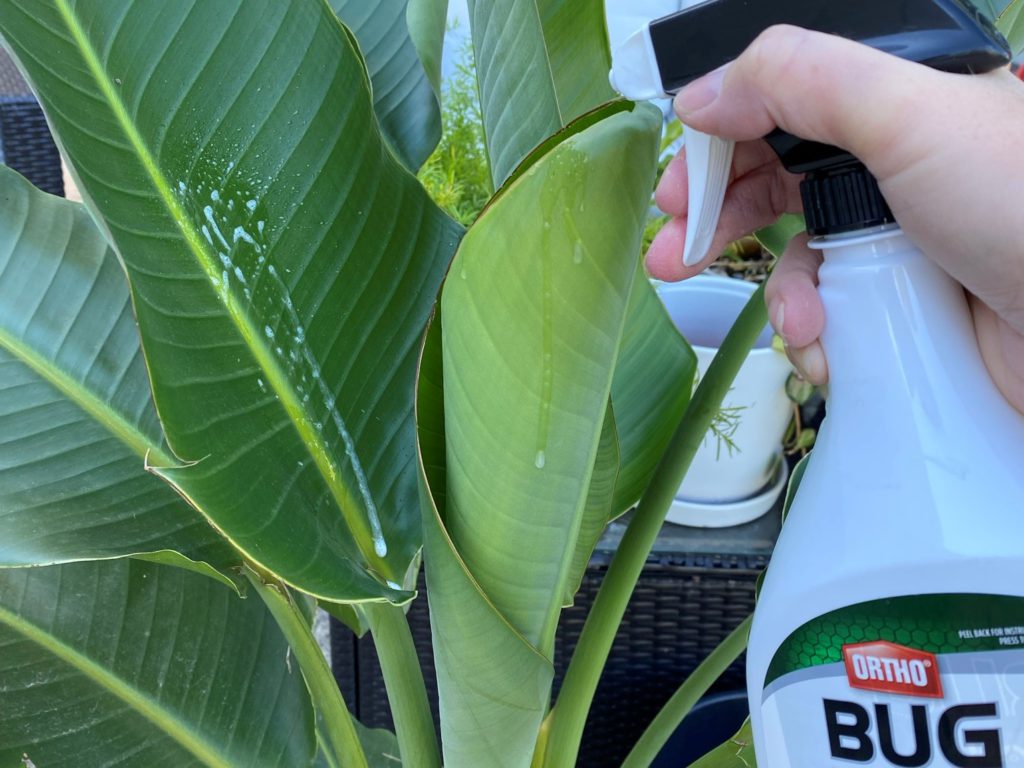
The outdoor environment is wonderful for tropical plant growth in the summer. The downside is that insects like aphids and spider mites can take up residence on your plants or in the soil, and then hitchhike into the house. After inspecting your plants, it’s wise to give them a good cleaning with an insecticidal soap. Spray the entire plant, paying special attention to get into the crevices and the leaf undersides, and the surface of the soil. After allowing the soap to sit on the plant for 15-30 minutes, you can wipe the plant down with a soft cloth, or shower it with the hose.
Step Three: Take the opportunity to repot after a season of faster growth
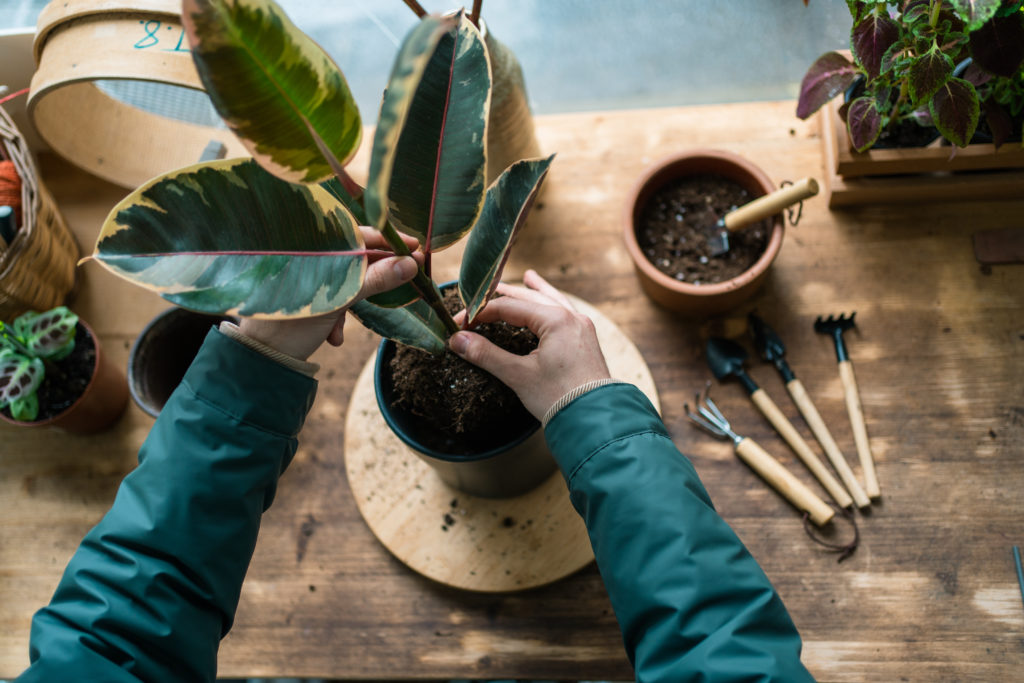
Most tropical plants will grow rapidly in the summer season, often outgrowing their original planter or container. Before bringing them in, take advantage of the nice weather to repot plants outdoors! Choose a pot that’s one size larger than the original container. Planting into a pot that’s too large can lead to roots sitting too wet for too long in a larger volume of soil.
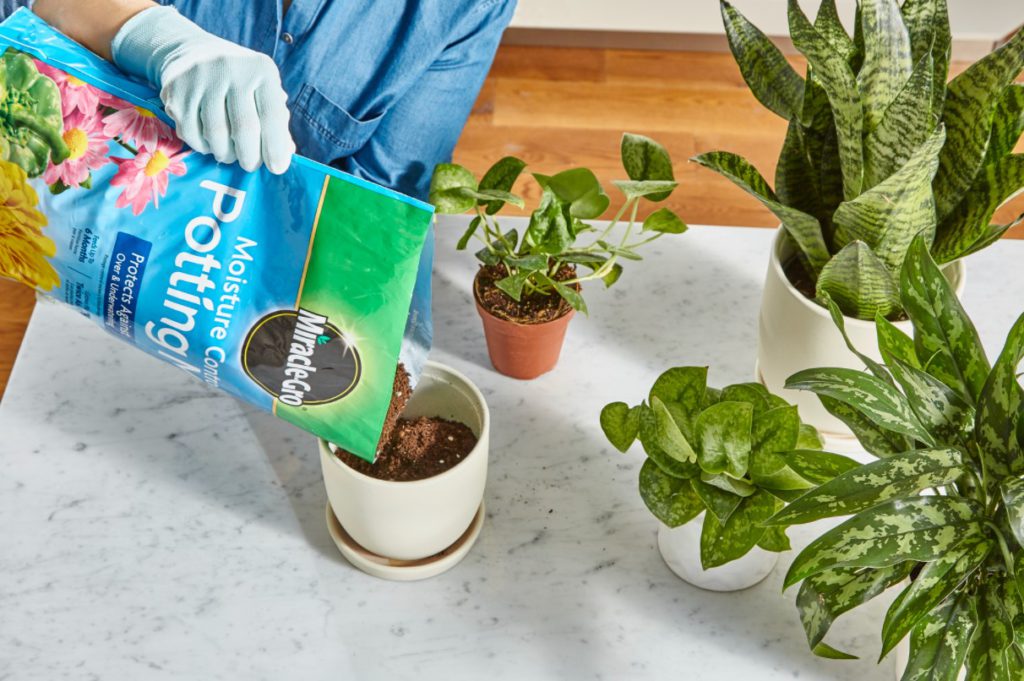
Soil type is important. Use a tropical plant potting mix, which is specially blended to encourage moisture retention, while also allowing excess water to drain away quickly. Ideally, use a planter or pot that has a drainage hole at the bottom. If your pot doesn’t have a hole, place a layer of drainage stone at the bottom. This will allow excess water to pool away from the roots of the plant.
Step Four: Acclimate plants to the indoors by giving them as much light as possible
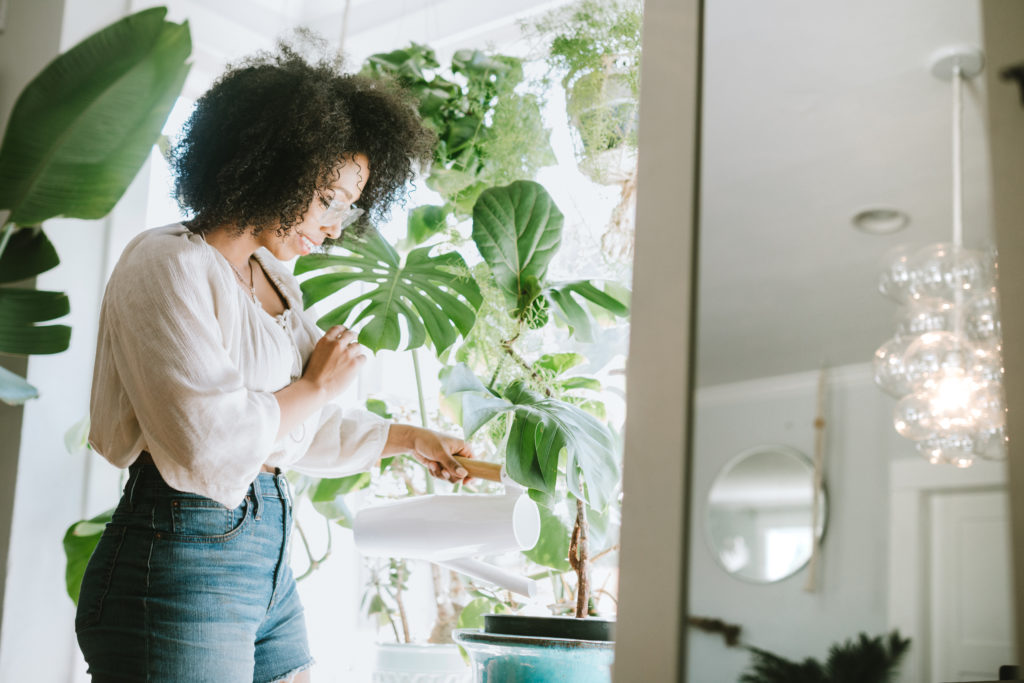
On the porch or patio, plants get an abundance of light! No matter how bright our indoor spaces may be, your tropical plants will need a period of adjustment to get used to the different conditions indoors. Ease the transition by giving them as much light as possible. With smaller plants, consider easing them into the house by bringing them indoors at night and keeping them outdoors in the day. Gradually reduce the outdoor time over the course of a week, allowing them to adjust slowly. This method isn’t often feasible for large, heavy plants, so just do the best you can.
Think about spaces you might not have used before to maximize light exposure. If windowsills aren’t an option, could plants be hung in windows instead? Kitchen counter space is often limited, but bright kitchen corner might do the trick! Think about hanging planters or space-saving stands to include plants in unused areas.
Step Five: Keep new plants separate from existing houseplants for 10-14 days
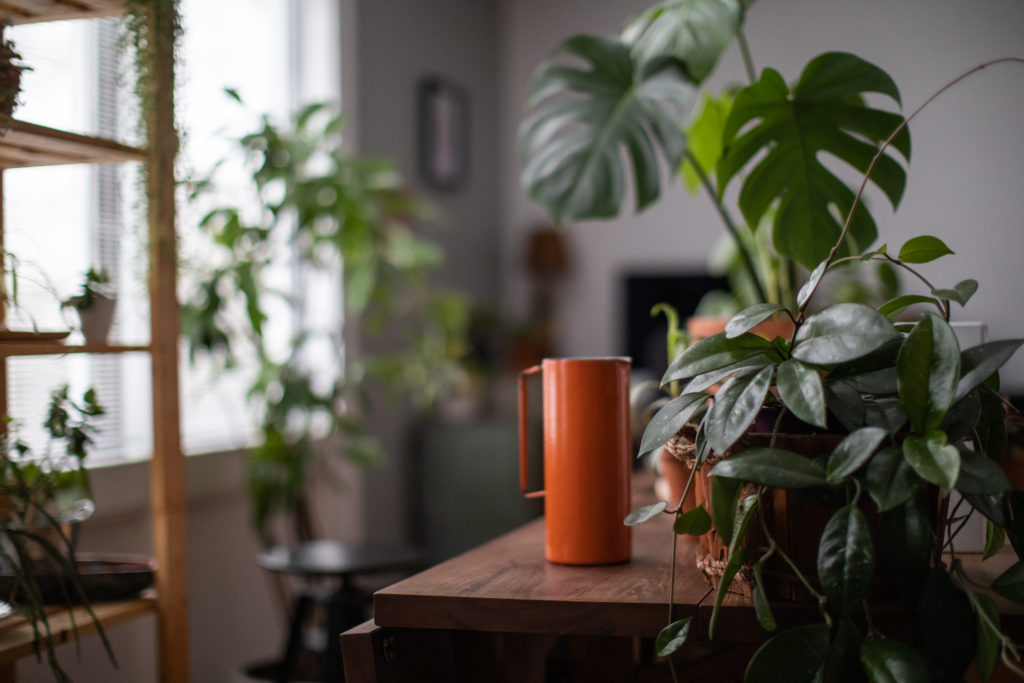
Remember those hitch-hiking insects we talked about? While we’ve now taken measures to ensure that your plants are re-entering your home without pests, it’s still worth the effort to be cautious. When bringing houseplants back indoors, or when bringing newly purchased plants into the home, it’s best to keep them separate from your existing plant collection for a quarantine period. This doesn’t have to be a separate room. Leave enough space to deter small insects from moving from plant to plant, just in case they managed to hide.
Step Six: Be patient as your plants adjust
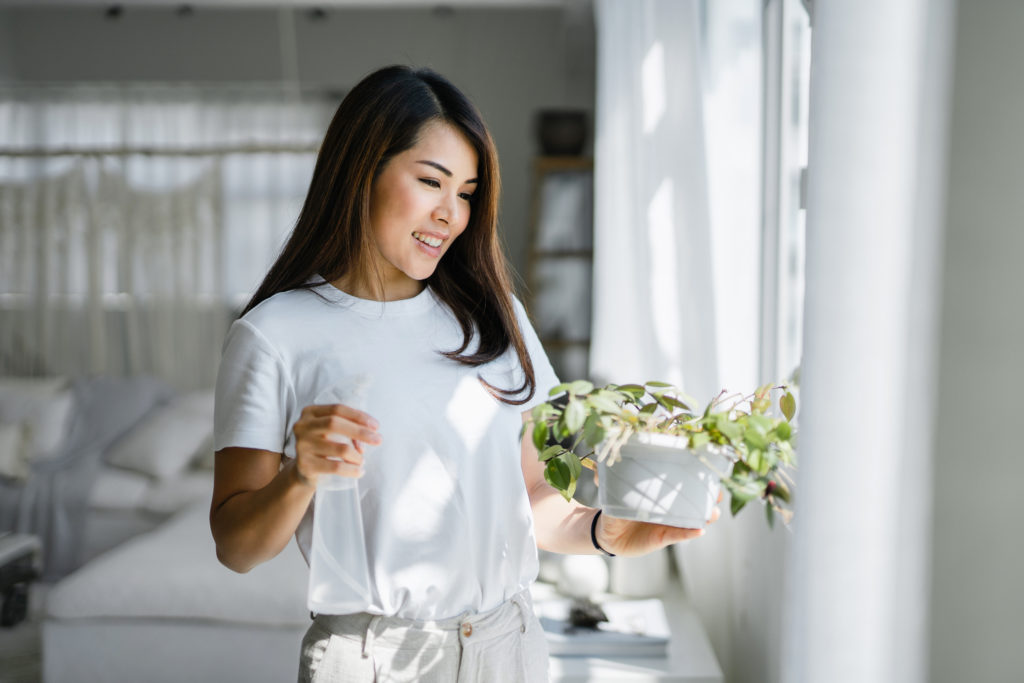
Change is tough. In the weeks that follow bringing houseplants back indoors, an adjustment period is normal and expected. The indoor home environment is very different from the outdoors, and it’s likely that some of your plants won’t entirely enjoy the transition. You may see leaves that yellow and drop, or leaf tips that brown and curl. Blooming plants will often stop flowering and drop their blossoms and buds. These are all normal reactions to the lower light, lower humidity, and lower airflow of your home.
To make your plants as happy as possible, be sure to reduce the frequency of watering, and to give them as much light as you can. Most tropical plants are resilient! Given some time and care, they will adjust to their new conditions and continue to bring life and joy into your space.
